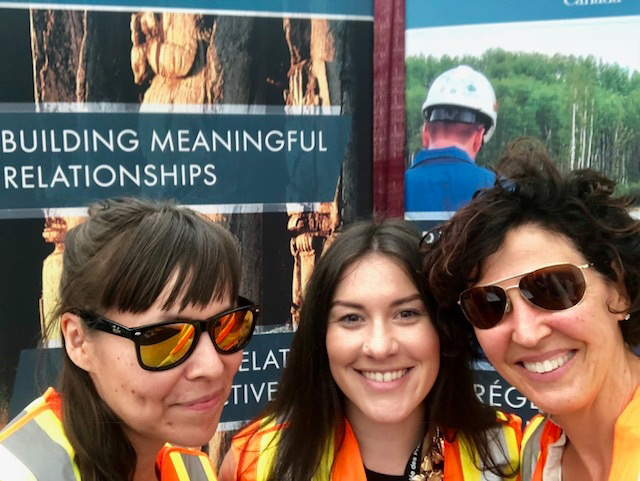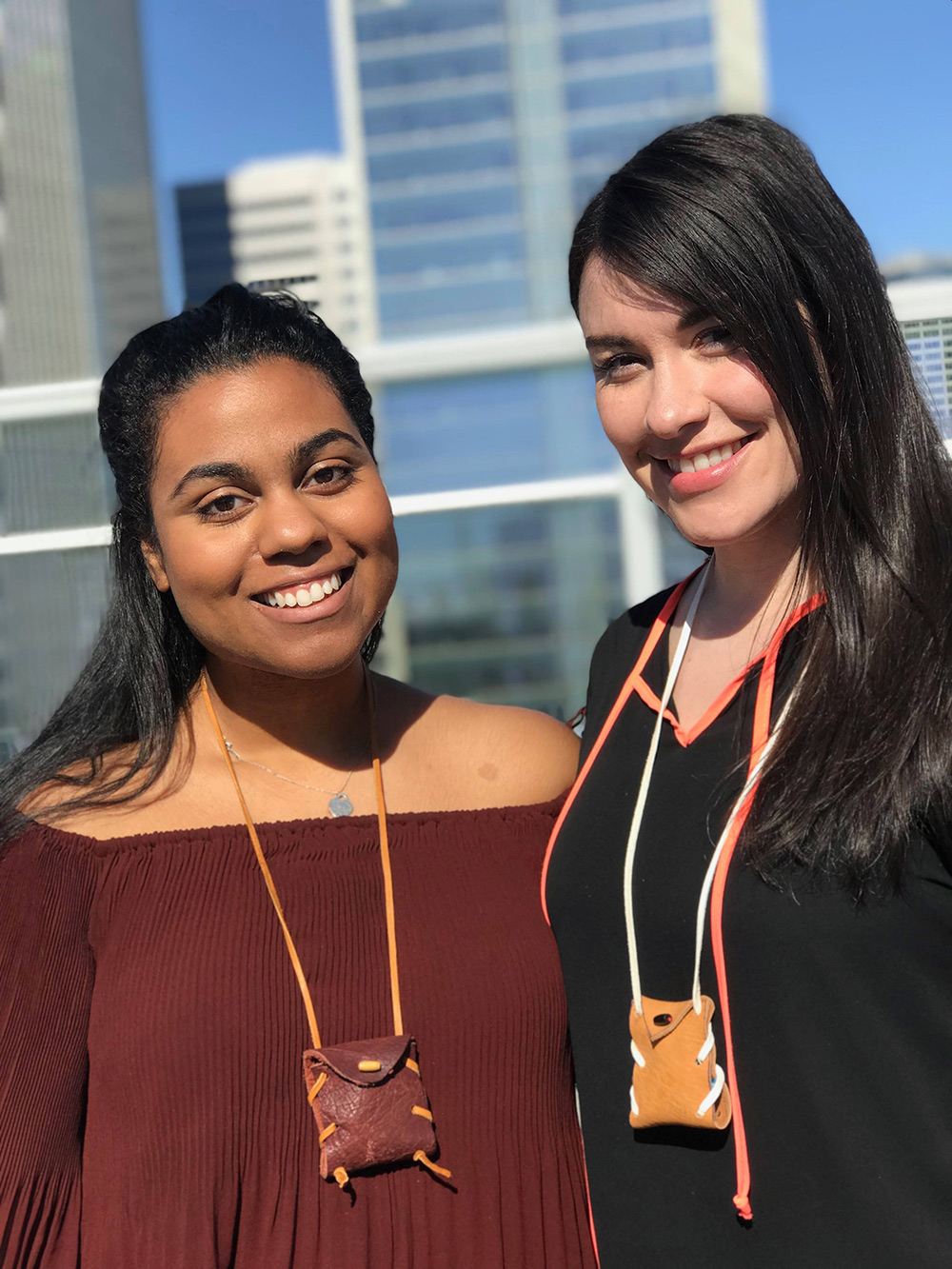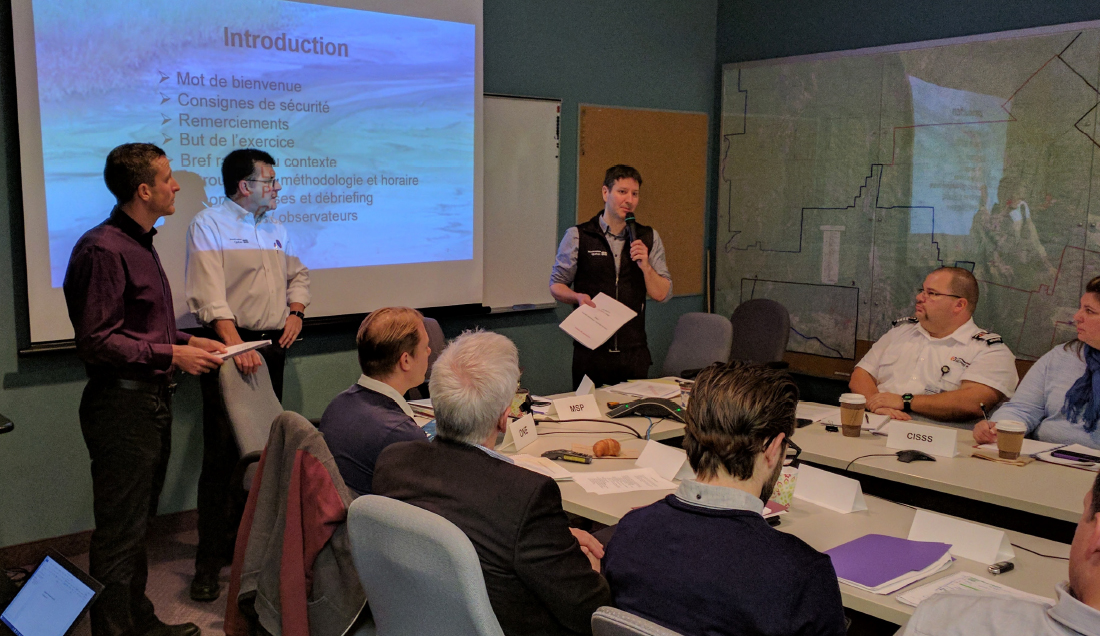Engagement
The NEB engages with stakeholders and Indigenous Peoples on topics within the National Energy Board’s mandate and role, beyond engagement on specific projects.
In order to prevent harm, keep Canadians safe, protect the environment, and prevent market inefficiencies, the NEB is committed to listening to what people have to say and sharing the unique information we have as a regulator. Engagement leads to more informed decisions and recommendations that support safety and environmental protection, energy literacy and public transparency across every aspect of our work.
Our Commitment
Stakeholders and Indigenous Peoples share their perspectives and provide feedback regarding the National Energy Board mandate and role.
NEB engagement activities with stakeholders and Indigenous Peoples are meaningful.
Engagement Activities in 2018-19:
-
 9,269
9,269
# participants in NEB Engagement Programs -
 82%
82%
% increase in participants from 2017-18 -
 196
196
Indigenous Engagement events -
 150
150
Stakeholder Engagement events
Performance Results – Engagement
Number of participants in National Energy Board engagement programs.
- Target 5,000
- Results
2017-18 4,270 - Results
2018-19 9,269
Percentage of surveyed stakeholders who engaged with the National Energy Board who indicate that the engagement was meaningful.
- Target 75%
- Results
2017-18 76% - Results
2018-19 84%
Percentage of surveyed Indigenous Peoples who engaged with the National Energy Board who indicate that the engagement was meaningful.
- Target 75%
- Results
2017-18 80% - Results
2018-19 80%
Key Initiatives in 2018-19
- Expanded public engagement by enhancing the capacity of regional and national committees to allow for the provision of input focused on improving our decisions and our work
- Emphasis on enhancements to Indigenous monitoring and landowner advisory services
- Expanded training options available to employees to build cultural competency and engagement skills and conflict management training
- Continued commitment to the IAMCs
- Increased emphasis and common engagement approaches across all NEB programs
A New Vision: Renewing Engagement at the NEB

Over the past year, the NEB has created new opportunities for engagement between the NEB, Indigenous Peoples and stakeholders. We have progressed–taking in and applying learnings from our engagement activities and the new relationships we are beginning to build. We have found that comprehensive engagement leads to better outcomes for all of the NEB’s programs.
The establishment of a Three-Year NEB Focus Area on Reconciliation reflected an organization-wide understanding and agreement that as we modernize assessment and lifecycle oversight activities, we must also reconcile our relationships with Indigenous Peoples and engage differently. The establishment of this enterprise- wide Focus Area means the NEB is poised and ready to transform the way we work with Indigenous Peoples by recognizing their unique culture, knowledge and history, and endeavoring to reflect a renewed nation-to-nation relationship based on recognition of rights, respect, co-operation and partnership. Building on the success of the two way dialogue that has been a hallmark of northern Indigenous Engagement and the Indigenous Advisory Monitoring Committees, the NEB is focusing on providing greater support for Indigenous Peoples to ask questions, learn, share perspectives, collaborate and inform improvements to the NEB’s work.
Engaging on Safety and Environmental Protection: Indigenous Monitoring Program
Including Indigenous Peoples in the monitoring of energy infrastructure creates stronger safety and environmental oversight outcomes and prevents harm. Indigenous Advisory and Monitoring Committees (IAMCs) were co–developed to increase Indigenous involvement in the federal monitoring and oversight of two energy projects: the Trans Mountain Expansion Project (TMEP) along with the existing Trans Mountain Pipeline, and the Enbridge Line 3 Replacement Program (Enbridge Line 3).
Over 2018–19, IAMC Monitors and NEB Inspection Officers participated in three joint training exercises. Indigenous Monitors participated in a four-day training session at the NEB Office in Calgary. At this training, Monitors learned about the mandate of the Committee, the role and powers of the NEB and its Inspection Officers and discussed how Monitors and Inspectors would work together. Monitors and Inspection Officers also participated in two days of Indigenous Knowledge training in Winnipeg. They heard from Elders from across the prairies and experts on United Nations Declaration on the Rights of Indigenous Peoples, and learned about cultural resources found on the Enbridge Line 3 alignment sheets including tipi rings, and other sacred sites. Inspection Officers also participated in a sweat lodge and a cultural land walk lead by First Nation Elders.
Between August 2018 and March 2019, Enbridge Line 3 and TMEP/ Trans Mountain IAMC Indigenous Monitors participated in 35 inspections and emergency management events with the NEB. The program had immediate effects that resulted in the increased protection of Indigenous interests and understanding of the NEB’s regulatory roles. It also made significant in–roads towards relationship–building and long-term changes in the capacity of the NEB to integrate Indigenous Knowledge, values, and perspectives into its work.
A workshop on the lessons learned from the initial phase of the Indigenous Monitoring program was held in January 2019 following the completion of the construction season. All participants had many positive comments to make about the pilot. While there is still work to be done and improvements to be made, the initial successes of the IAMC pilot have created a new perspective on safety and environmental oversight that reflects the importance of cultural learning and knowledge exchange.
“Working with Indigenous Monitors helped me broaden my lens, to include elements that I would have not picked up in inspections before. It helped me do my job and ensure that impacts on the land and on Indigenous culture were avoided or minimized.”
NEB Inspection Officer
“The cooperation between the NEB Inspection Officers and IAMC Indigenous Monitors was very respectful. The first inspection, we issued an Order–that was pretty successful. We found something that needed addressing and it was accepted by the Inspection Officers after they looked into it. That was exciting for me–to see how they work, how they understand things. Every step of the way I was included.”
IAMC Indigenous Monitor
Safety and Environmental Oversight and IAMC Engagement Initiatives over 2018-19
- Indigenous Monitors participate in a total of 35 inspections and emergency management events
- IAMCs receive Serious Incident notifications
- Community outreach to share Emergency Management information
- Remediation Process Guide solicit IAMCs feedback
- Indigenous Monitor input on Company Condition Filings
Indigenous Cultural Competence
The NEB’s decisions and actions may impact Indigenous rights and interests, and it is important that we understand and respect those rights and interests in our activities. In 2018–19, the NEB developed an Indigenous Cultural Competence Framework that will shape our policies, processes and training development going forward. The goal of the Framework is to provide specific, consistent and structured knowledge and skills that improves our ability to competently and respectfully engage with Indigenous Peoples.

The NEB hosted 11 Indigenous Awareness events in 2018-19, featuring Indigenous arts, culture and interactive learning opportunities, including two blanket exercises, webcasts by the Canada School of Public Service, a visit to the Alex Janvier exhibit at the Glenbow Museum, recognition of Orange Shirt Day, the NEB’s first annual Authentic Indigenous Art Market, and the collective four week learning series of APTN’s “First Contact” with a guided Elder-led panel discussion.
Improving the NEB’s Regulatory Framework through Increased Stakeholder Engagement
The NEB’s Regional Offices have developed effective engagement mechanisms which allow NEB employees to regularly meet with impacted stakeholders and rights holders to gather feedback to enhance our regulatory framework.
The Vancouver Regional Office’s (VRO) ongoing meetings with the Lower Mainland Municipalities (LMM) allowed technical staff from the NEB to meet face-to-face with municipal stakeholders and discuss issues that are important to them. One of the key issues raised through this forum is the LMM’s concern regarding increased costs incurred by municipalities as a result of work conducted near NEB-regulated pipelines, particularly in urban areas. The NEB worked with varied stakeholders to identify options to address these concerns. In 2019, the NEB will issue a discussion paper with a proposed regulatory approach that reflects this early engagement activity, and begin the formal consultation process on the proposal.
The Montreal Regional Office (MRO) worked with officials from the Communauté métropolitaine de Montréal and the Quebec Government to finalize the Cadre de référence Intervention Pipelines, a framework aimed at clarifying the roles and responsibilities of Emergency Management officials from all levels of governments in the event of a pipeline incident in the province. Incident response has been an on-going concern in the region, and the MRO engaged extensively with municipalities along the routes of Enbridge Line 9B and the Trans–Northern Pipeline on our existing emergency management practices.
The MRO has also engaged extensively with officials from Public Safety Quebec, Public Safety Canada and other municipalities, including the City of Montreal to organize Diapason 2, a two–day table–top incident response exercise involving more than 150 participants. This was the second table–top exercise organized in the region, and these exercises continue to be well–attended and well-received.


